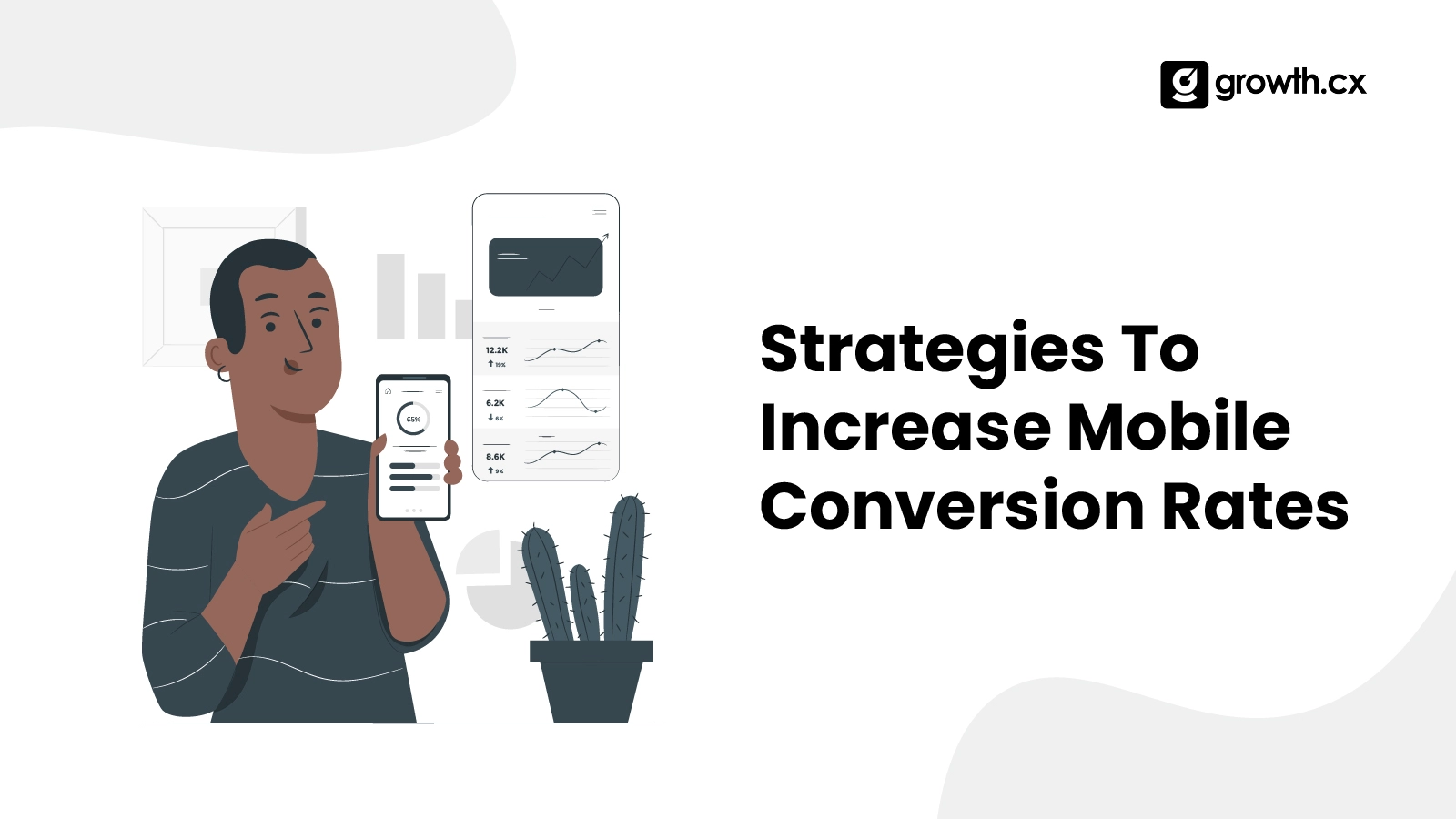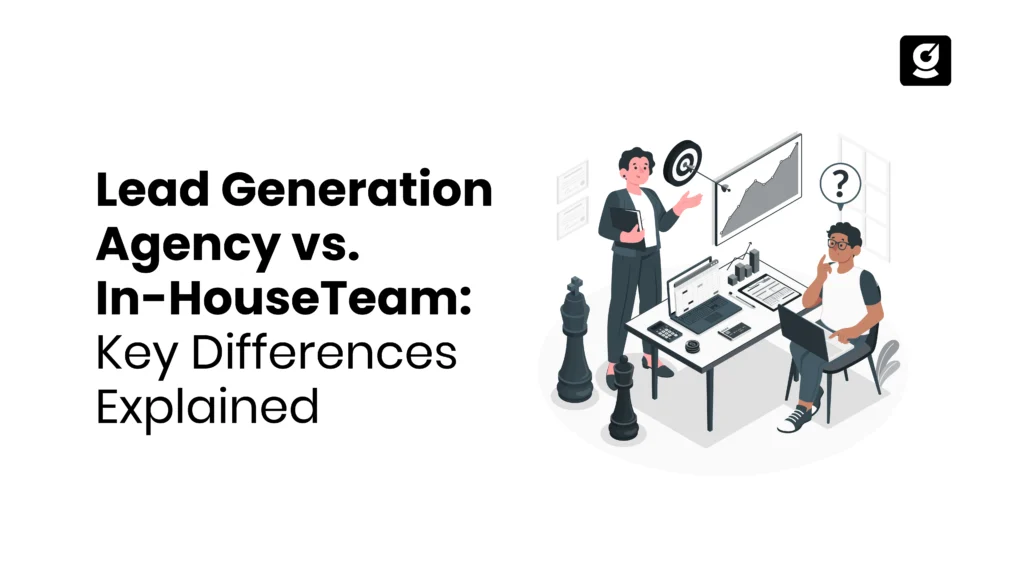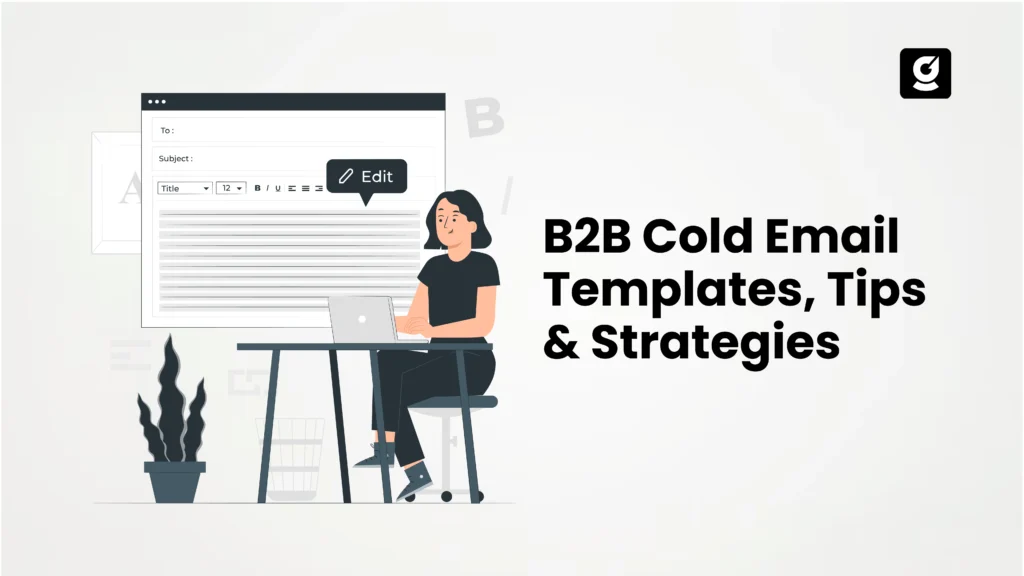The average desktop conversion rate is 1.3%, meaning 13 out of every 1,000 people who visit your site convert and make a purchase. In terms of mobile devices, the average conversion rate is 2.72 percent, which means that of every 1,000 visitors to your site using a mobile device, 272 will convert and make a purchase.
That is why the mobile conversion rate is essential for every website and should be a priority. So, understanding and optimizing your mobile conversion rate is crucial, especially for B2B SaaS agencies. But what exactly is a mobile conversion rate, and why does it matter so much?
In this blog, we will learn about the importance of mobile conversion rates in B2B SaaS marketing and the benefits of using them.
Understanding Mobile Conversion Rate in B2B
The mobile conversion rate measures the percentage of mobile users who complete an action on your website or app. This particular action can vary depending on your business goals and can include form submissions, downloads, making a purchase, or signing up for a trial. It’s all about how effectively your mobile site or app turns visitors into leads or customers.
You can calculate the mobile conversion rate by dividing the number of visitors who completed an action on a mobile device by the total number of visitors who began a task on a mobile device.
Here’s the formula you can use to calculate the mobile conversion rate.
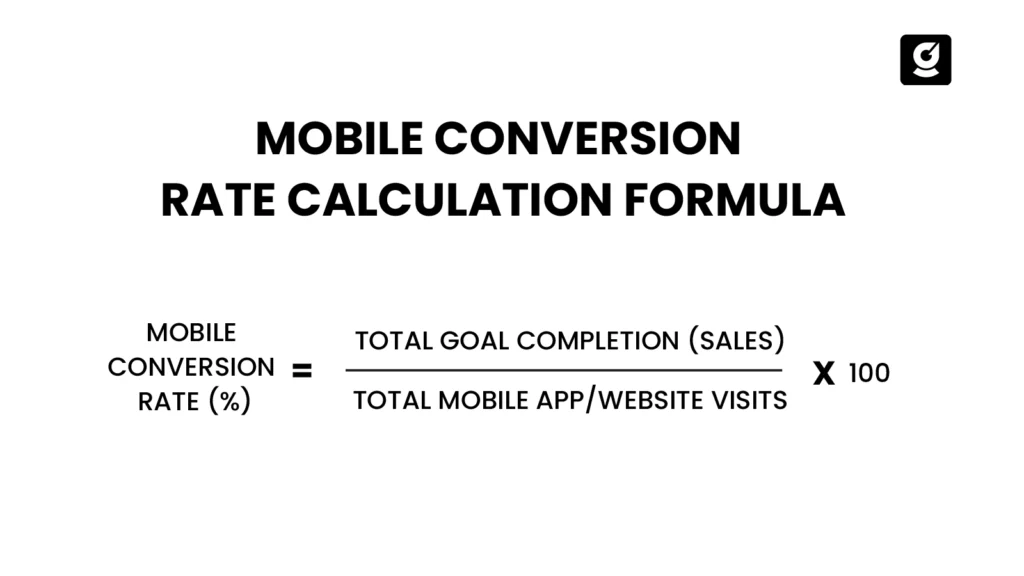
To accurately measure your mobile conversion rate, you’ll need to track specific metrics tailored to your business objectives.
For instance, if you’re a software company, the number of trial signups through mobile devices can be a key metric. E-commerce sites might focus on the number of purchases made from mobile devices. Other important metrics include lead form submissions, newsletter signups, and the download of whitepapers or case studies.
Why Mobile Conversion Rate is Important?
- A mobile-optimized landing page is not just beneficial; it’s essential.
- Your mobile landing page is the cornerstone of capturing leads and driving conversions.
- These pages need to be designed with the mobile user in mind.
- Easy to navigate, load quickly, and clearly communicate the value proposition.
- A mobile-optimized landing page improves user experience by ensuring that Content is easily readable without zooming.
- Buttons are always easy to tap with a finger, and forms are simple to fill out, even on a small screen.
- These factors significantly affect the likelihood of a mobile visitor taking the desired action.
- Mobile usage is often on the go, so ensuring your mobile pages load quickly and efficiently can significantly impact your conversion rates.
- By understanding and improving your mobile conversion rate through strategic measurement, benchmarking, and the optimization of mobile landing pages, you increase growth opportunities for your B2B business.
Ways To Improve Mobile Conversion Rate
If you want to enhance your mobile conversion rates, you must focus on optimizing user experience and tailoring strategies to mobile users’ unique behaviors. ‘
Here’s how you can enhance your mobile conversion rates through strategic adjustments and adopting the latest trends in user experience design.
1. A/B Testing
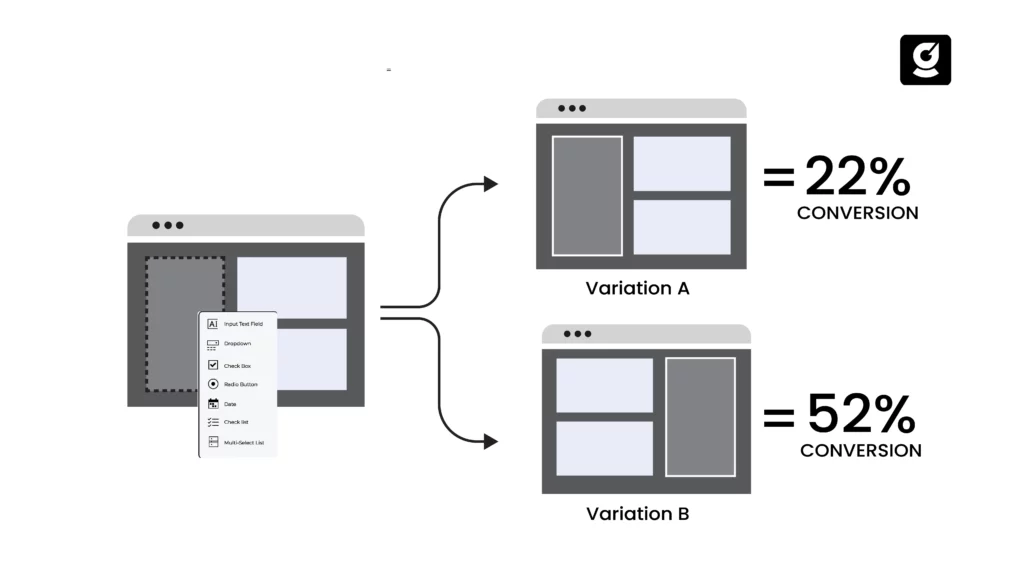
The A/B testing process, or split testing, is a vital tool in optimizing mobile experiences. It’s like comparing two versions of a web page or app feature.
Websites can determine which variation performs better in terms of driving conversions. This method provides data on what resonates with their audience. It allows them to make informed decisions on elements like CTA button color, page layout, or copy length.
Regularly conducting A/B tests ensures your mobile site or app remains optimized for maximum engagement and conversions.
2. Desktop vs. Mobile User Behavior
Understanding the differences between how users interact with desktop and mobile devices is crucial.
Nowadays, most people browse through mobile devices, so mobile users often aim for quick information and appreciate simplicity and speed.
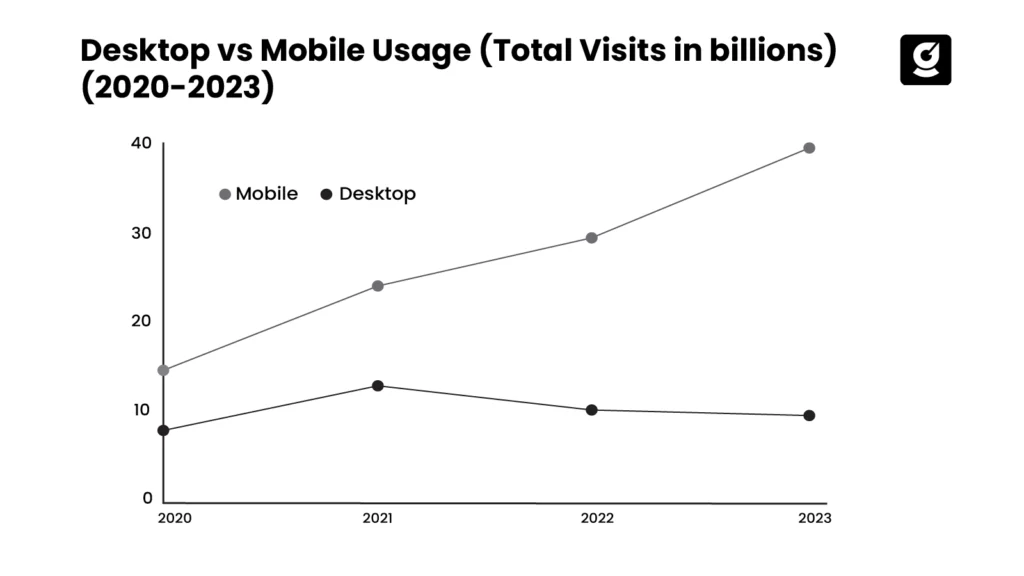
This stat shows that mobile usage is high, and you have to improve your mobile design to increase your mobile conversion rate. So remember these points when designing your mobile app or web so that you will get as high a mobile conversion rate as possible.
- Mobile users typically seek efficiency and simplicity in mobile devices.
- Optimizing your mobile site or app is helpful for improving conversion rates.
- Simplify navigation to ensure that users can effortlessly find what they’re looking for, enhancing the user experience.
- Make contact information and support readily accessible to reduce user frustration. It helps in facilitating easy communication.
- Adjust page elements and controls for touch interactions in mobile devices.
- Optimize loading times, as mobile users expect quick access to information and may leave a slow website.
- You can ensure your site or app is fully responsive across all device sizes.
- Keep forms short and straightforward.
- Create content with mobile users in mind, focusing on readability and engaging visuals that are easy to consume on smaller screens.
- Add mobile-specific features like click-to-call buttons or location services.
- Continuously test and analyze user behavior on your mobile site or app.
To cater to this audience, ensure your mobile site or app offers a good user experience. You can simplify navigation menus, make contact information easily accessible, and optimize page elements for touch controls.
3. UX Trends
Always try all the current UX design trends, which are essential for boosting mobile conversions. Some of them are:
- Simplified Forms: Keep forms short and straightforward to encourage completion. Utilize autofill where possible to expedite the process.
- Thumb-Friendly Navigation: Design your mobile site so that navigation and interactive elements are easily reachable with a thumb.
- Dark Mode: Set a dark mode option to accommodate user preference and comfort. This feature extends battery life and reduces eye strain, helping improve user retention and engagement on mobile devices.
- Voice User Interfaces (VUIs): Integrating voice user interfaces into mobile apps and websites can significantly enhance accessibility and user engagement, providing a hands-free, seamless experience.
- Augmented Reality (AR): It offers immersive experiences that can dramatically improve users’ interaction with mobile applications. AR can be used mainly in the retail, education, and entertainment sectors.
- Simplified User Journeys: Minimizing the number of steps required to complete an action or transaction enhances the user experience and reduces abandonment rates.
- Motion Design and Microinteractions: Subtle animations and microinteractions can guide users through their journey. They help provide feedback and create a more engaging and interactive experience that increases mobile conversion rates.
- Biometric Authentications: Implementing biometric authentication methods, such as fingerprint scanning and facial recognition. It can streamline login and transaction processes.
Suggested Read: Creating SaaS landing page for Performance Marketing
4. Site Speed
The speed of your mobile site is a critical factor in conversion rates.
A delay of even a few seconds can lead to significant drop-offs. To optimize site speed, you can compress images, leverage browser caching, and minimize the use of redirects. Tools like Google’s PageSpeed Insights can help identify particular areas for improvement and ensure that your site loads swiftly for all users.
5. Mobile Optimized FAQ
Creating a mobile-optimized FAQ section is a strategic move to increase mobile conversion rates. In the mobile search era, users expect quick, accessible answers to their questions, especially when browsing on smaller screens.
Here’s how to leverage a mobile-optimized FAQ section effectively:
- Concise Layout: Opt for a clean, straightforward design that allows users to find answers without excessive scrolling.
- Touch-Friendly Interface: Ensure that all interactive elements are easy to tap with a finger without the need for zooming in.
- Segment by Topic: If your FAQ section covers various topics, consider categorizing questions to make navigation simpler.
- Incorporate Search: A search bar within the FAQ section can significantly improve usability.
- Fast Loading Times: Ensure your FAQ page is optimized for speed, with compressed images and streamlined code to minimize wait times.
- Use Chatbots for Instant Assistance: Integrating a chatbot that can answer FAQs or guide users to the correct section.
- Keep Content Fresh: Regularly update your FAQ section based on new questions, feedback, and user behavior analytics.
A mobile-optimized FAQ section serves as a resource for information. Then, you can improve the mobile user experience and drive higher conversion rates.
6. Mobile-First Campaigns
Adopting a mobile-first approach in your marketing campaigns is a good strategy.
This means designing your campaigns with mobile users in mind from the start rather than adapting desktop content for mobile. By focusing on this mobile experience, you will get as much advantage. All elements s of your campaign are optimized for the devices most likely to be used by your audience.
7. Product Images
High-quality, mobile-friendly product images can significantly enhance your conversion rates. Ensure images are optimized for mobile viewing. Make it zoom and view from multiple angles without compromising load times.
Clear, detailed images can greatly influence purchase decisions by providing a better understanding of the product.
8. Social Media Marketing
With the widespread use of social platforms on mobile devices, social media marketing is a powerful tool for driving mobile conversions.
Creating engaging, shareable Content tailored for social media can increase brand visibility and direct traffic to your mobile site or app. Incorporating social media advertising with clear, compelling calls to action can further enhance conversion rates.
Suggested Read: Best Social Media Marketing Agencies for SaaS Startups in 2023
9. Infinite Scrolling To Improve Mobile Experiences
When implemented thoughtfully, infinite scrolling can enhance mobile experiences. It encourages users to stay engaged longer and leads to higher conversion rates.
- User Engagement: Infinite scrolling eliminates the need for pagination. It offers a continuous flow of Content that keeps users engaged and encourages longer browsing sessions.
- Optimized for Mobile Interaction: This design pattern is particularly beneficial for mobile users. It provides an intuitive and effortless way to navigate through Content due to the natural scrolling behavior on touchscreen devices.
- Placement of CTAs: To optimize conversions, calls to action (CTAs) should be strategically interspersed throughout the Content. This helps ensure visibility without overwhelming the user.
- Performance Optimization: Ensuring quick load times and smooth performance as more content loads to maintain a positive user experience and prevent drop-offs.
- Content Segmentation: Thoughtfully organizing Content and incorporating relevant product or service offerings can guide users toward conversion points naturally.
- Accessibility: Implementing infinite scrolling without compromising the site’s accessibility by including options for traditional navigation and ensuring easy access to various site sections is essential.
Conclusion
To summarize, understanding your audience’s needs and preferences is key to improving your mobile conversion rate. Whether you’re redesigning your mobile presence through an app or a mobile website, these strategies are a great starting point.
Having the assistance of a specialized SaaS marketing agency can enhance your efforts. These agencies bring expertise and custom-tailor strategies based on your business goals. Their professionals will provide innovative solutions and expert guidance that position your business for a better mobile conversion rate.

